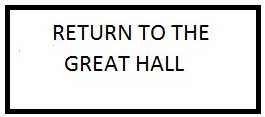A CHAPEL DEDICATED TO BLESSED FRANCIS XAVIER SEELOS CSsR
(A part of the permanent collection of the Museum Of Yesterday)
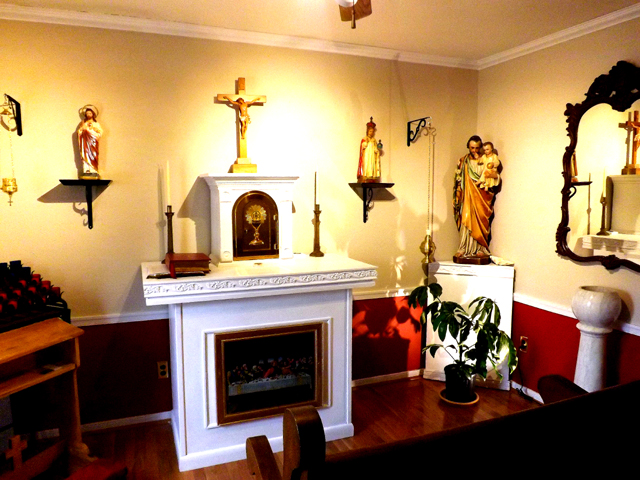
 |
Many of our visitors ask "why does an American history museum have a working chapel as part of its regular exhibits. The answer to that question is that the museum's founding family has, over the years, built an extensive collection of religious artifacts that is worthy of sharing with the public. When the founding of the museum was being explored, we wanted a way to share these items with our visitors in a meaningful way. What better way to accomplish this than to place the collection on display in a working church. But the thought goes even deeper in that America was built on a belief in God, which is deeply engrained into our culture. Even our U.S. currency carries the words "In God We Trust." Therefore, our museum chapel exists to demonstrate that religion has been an integral part of the history of a nation that grants the right to each of us to worship as we see fit. For most Americans in the early to mid 20th Century, religion was an important part of life. In our founder's predominantly Roman Catholic childhood home town of New Orleans, Italian, French, Irish and German families remained close to ethnic based churches in which services were often conducted in native European languages. New Orleans was noted for having multiple same denominational churches often located within close proximity, mainly because of the different languages and cultures of each congregation. Despite a movement by today's left wing liberal politicians and activists, those of us who study history are keenly aware that America is a nation that was founded on the principles of Judeo-Christian Religion. Although our Constitution frees us from any state controlled religion, and gives us the right to worship as we see fit, the country was never-the-less founded on the principles and values espoused to by people like George Washington, Thomas Jefferson, and other religious men. Throughout history, our churches and synagogues have provided the inspiration for Americans of all races, nationalities and creeds, to find the strength of conviction that made us the greatest nation on Earth. |
Chapels associated with museums are not a revolutionary idea. The Vatican Museum has its Sistine Chapel, The Museum of Methodism has its Wesley Chapel, and the Rodin Museum features the Chapels of the Sisters. Ancient church artifacts can be considered art, and are often as beautiful in an artistic way, as they are inspiring.
In keeping with the traditions of many ethnic families in the United States during the early 20th Century, the Museum Of Yesterday's chapel exhibit is a completely functional chapel where religious services are periodically conducted. The patron saint of the chapel is Blessed Francis Seelos, a beatified Redemptorist Catholic priest who lived, served and died in New Orleans, Louisiana during the 19th Century Yellow Fever Epidemic. Father Seelos is presently a candidate for Canonization by the Catholic Church, and will hopefully gain full sainthood status in the coming years. Our chapel altar contains a rare physical relic of Fr. Seelos, which is a requirement in order to be considered a church by the Roman Catholic religion. While the chapel serves as an appropriate display for the collection of 19th and 20th Century church artifacts, visitors are often inspired to attend a service or simply pause for a moment of prayer or meditation while visiting.
Shown here are photographs of the vessels and items that are used in conjunction with services conducted in the chapel.
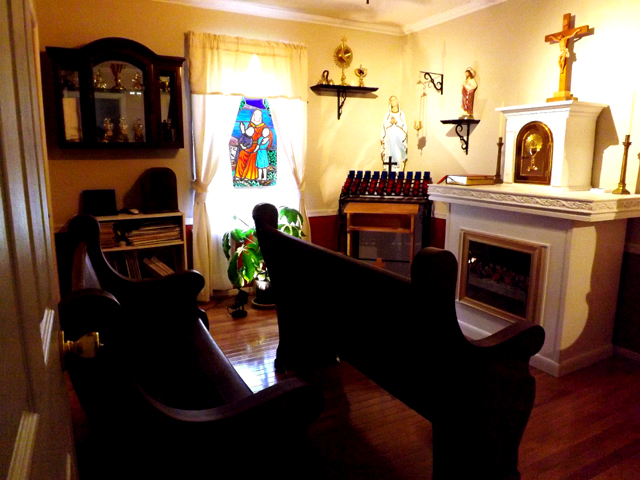
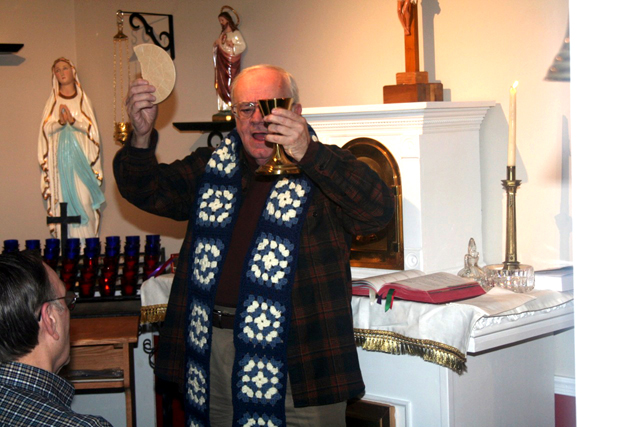
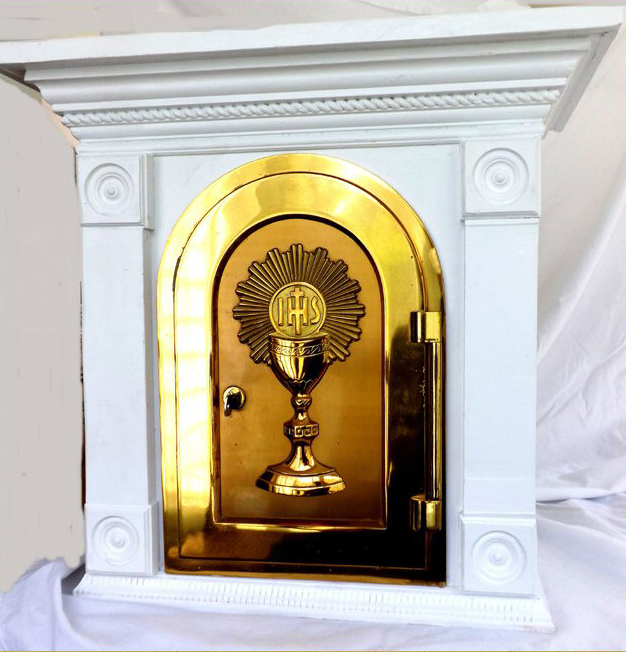
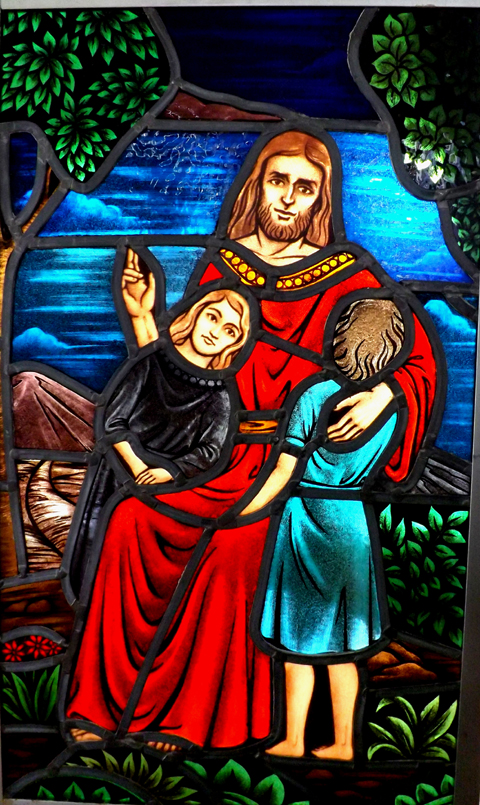
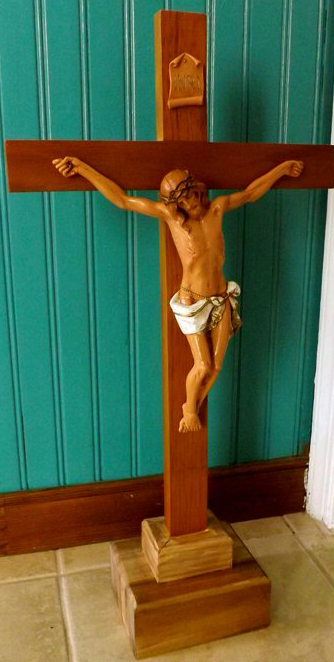
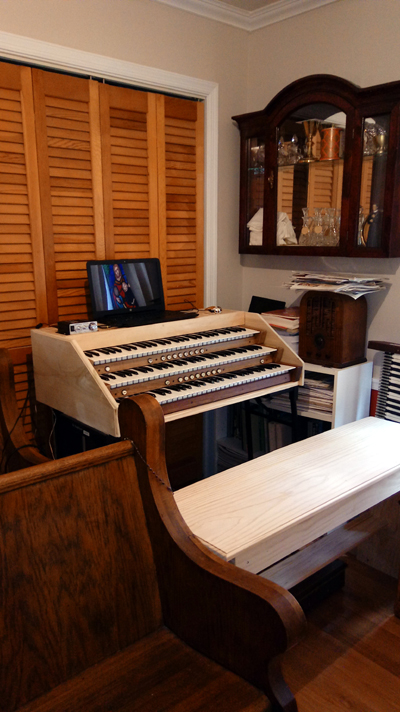
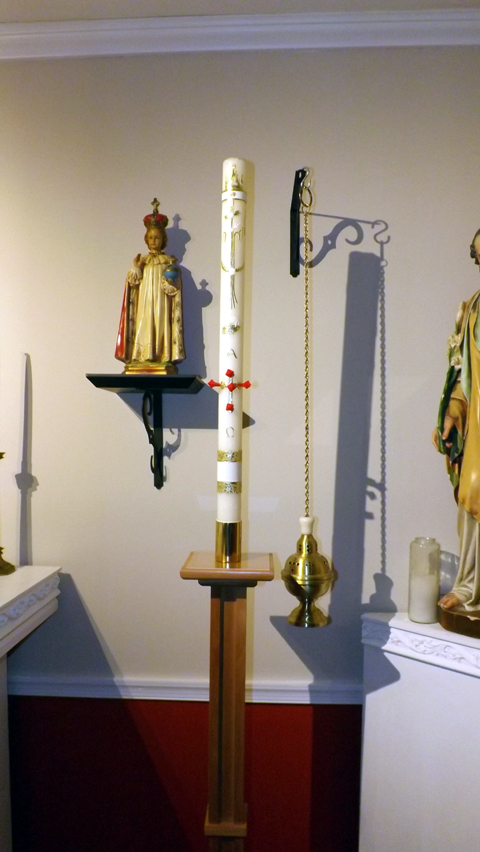
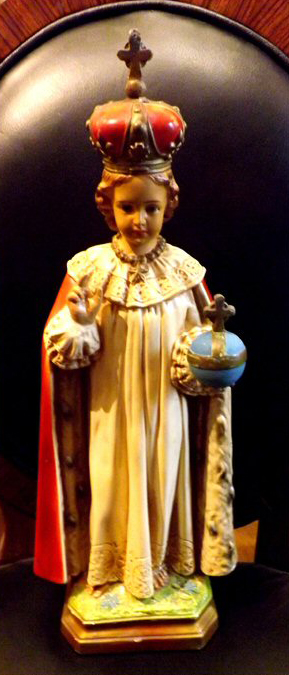
Rare statue of the "Infant Jesus of Prague" (ca: 1910) originally rescued from a closed historic Roman Catholic Church.
The Infant Jesus of Prague is widely accepted by Christians as a source of miracles in cases of the impossible. This statue, representing the Infant Jesus, now graces the museum's chapel, where it is placed to the left of our altar just as once was in a large Catholic church.
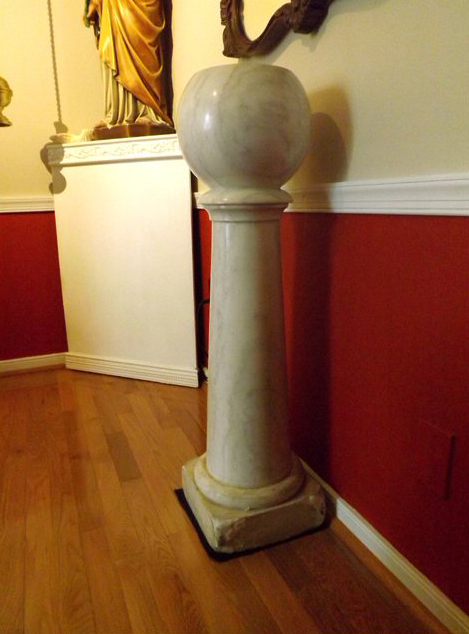
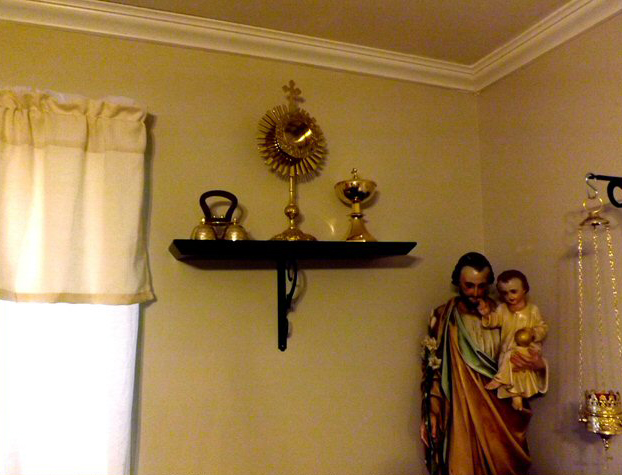

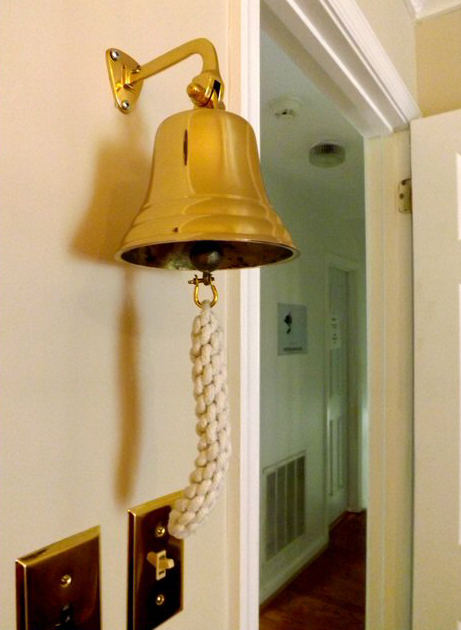
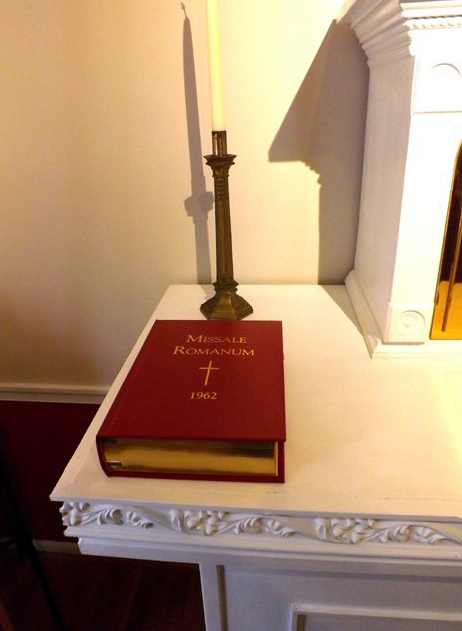
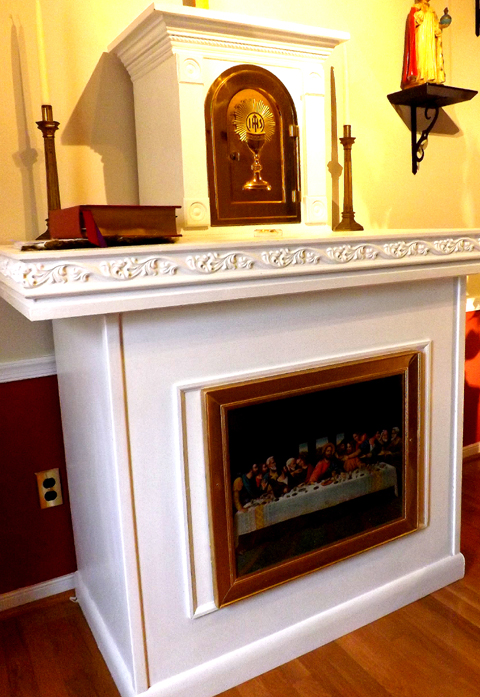
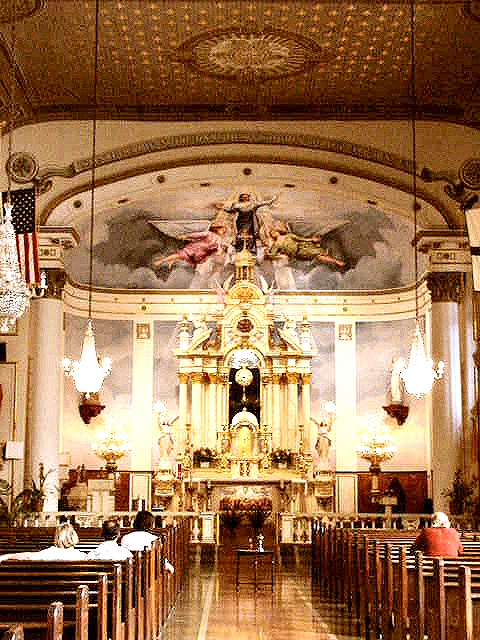
Because of New Orleans' ethnic diversity, many neighborhoods contained multiple churches of the same denomination, while each individual church maintained its ethnic culture. In the first half of the century, it was not unusual to have German, Irish, Italian and French speaking Catholic parish churches all located in a small area of town that would normally have been served by just one church.
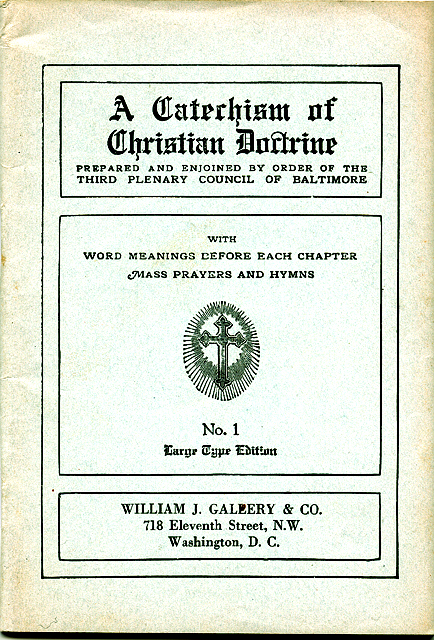
This is a 1923 edition of the famed Baltimore Catechism, a book with which all Catholic children of mid-20th Century America are probably familiar. The Museum of Yesterday's library contains several editions of the Baltimore Catechism, including an original first edition dating back to the original release which occurred in April of 1885.
A personal recollection from our founder and chairman:
As a child who attended school in the 1950s, I have memories of religion classes that were based around the Baltimore Catechism. In those days, religious education was a matter-of-fact thing that did not require the personal or government-political agonizing that goes on in today's secular society. There was even a great deal of cooperation between the government and the churches when it came to seeing that children of all faiths were given an opportunity to receive a religious education of their choosing.
I site as an example, a program that was in effect in most cities where the public schools and religious schools operated side-by-side. In New Orleans, LA., where I was raised, those of us who attended the public schools were released from classes an hour early on Tuesdays and Thursdays in order for us to go down the street to the neighboring Catholic school so that we could receive religious instruction from the nuns who taught there. Likewise, children of other religious persuasions were also permitted to attend classes during those same periods, although most of the Protestant faiths held their religion classes as part of their Sunday School programs. No child, however, would have been denied an opportunity to attend religious education when it was offered. We were also granted time off, without it impacting attendance records, for retreat days at the Catholic school. The classes for those children of other faiths who remained behind in the public school, were structured for that day so as to not cover any critical course material.
I remember too that, even in the early 1960s when I was in high school, our band and vocal music concerts still contained works that were at times associated with religious themes. After all, music written before 1850 was almost exclusively religious in nature, so the proper study of Bach, or any of the great composers that pre-dated 1850, would have involved some mention of religious subject matter.
Our public school choir director dealt well with this matter of separation of religion and state. He structured our concert repertoire to include probably 50% of the works of the "great masters," which sometimes included religious content, and 50% music that was written by more contemporary and secular composers. The music was taught not as a celebration of religion, but as a lesson in the work of the composers, or to illustrate the arrangement techniques that recognized professional choirs, such as the Mormon Tabernacle, Robert Shaw Chorale, and even the Mitch Miller and Ray Charles singers choruses, were doing at the time. Consequently everyone appreciated the opportunity to learn the different arrangements and styles of music, and there was never any religious objection raised by the students or their parents to this manner of teaching. Just a few decades later, however, there can not even be a reference or mention of Christmas and traditional Christmas carols, or any such literature taught in the schools, even though it was the foundation of the subject being taught, and likewise the foundation of our very nation.
